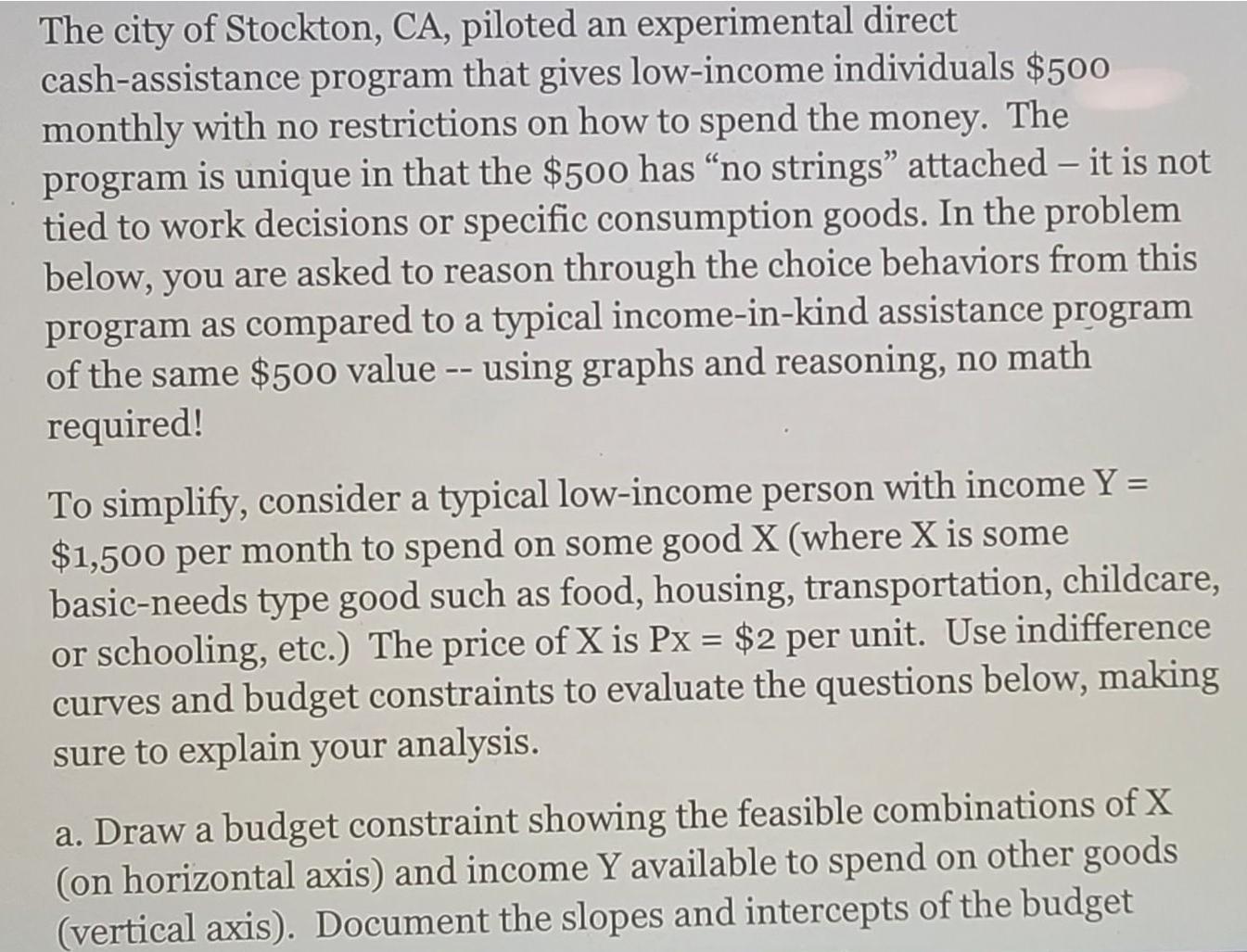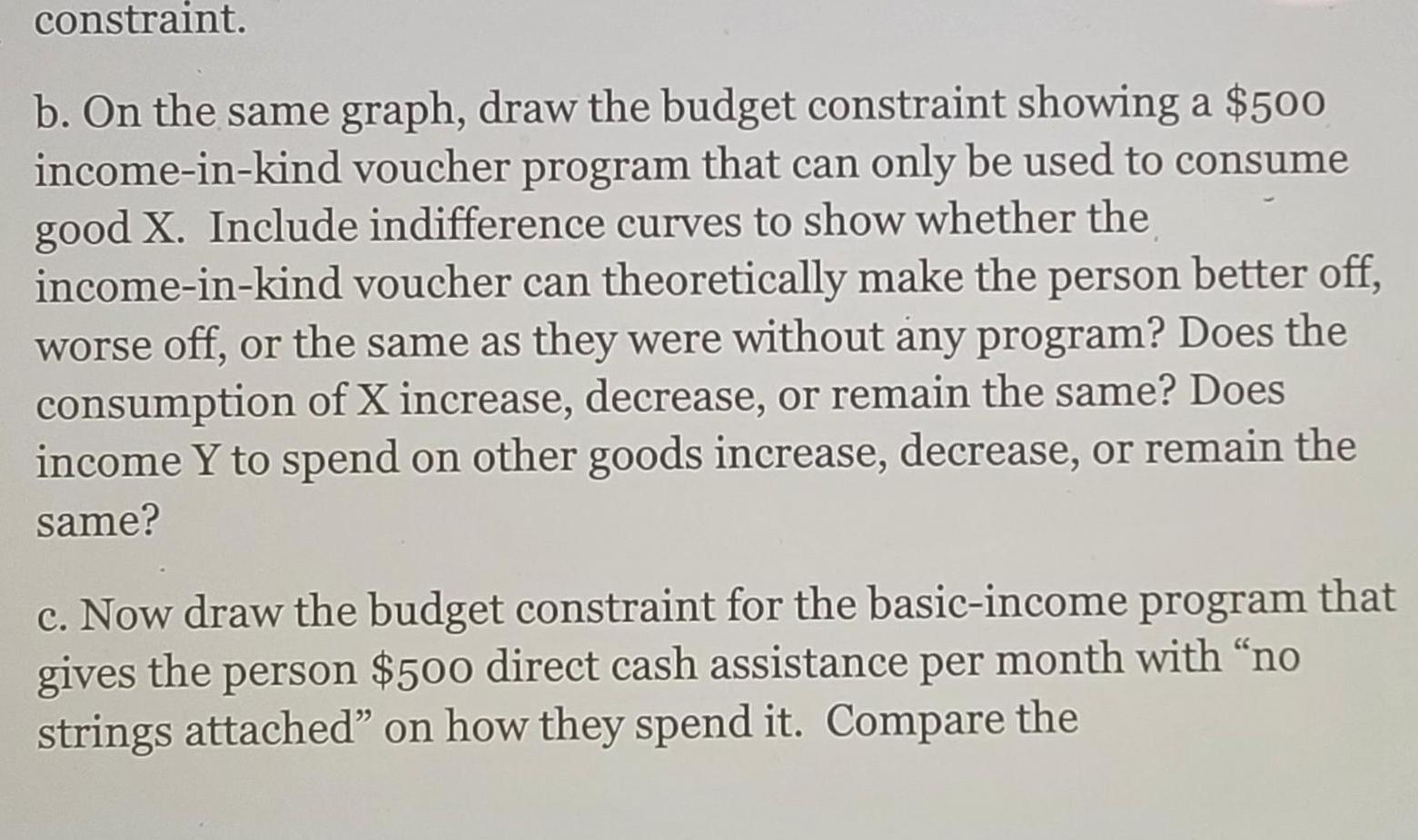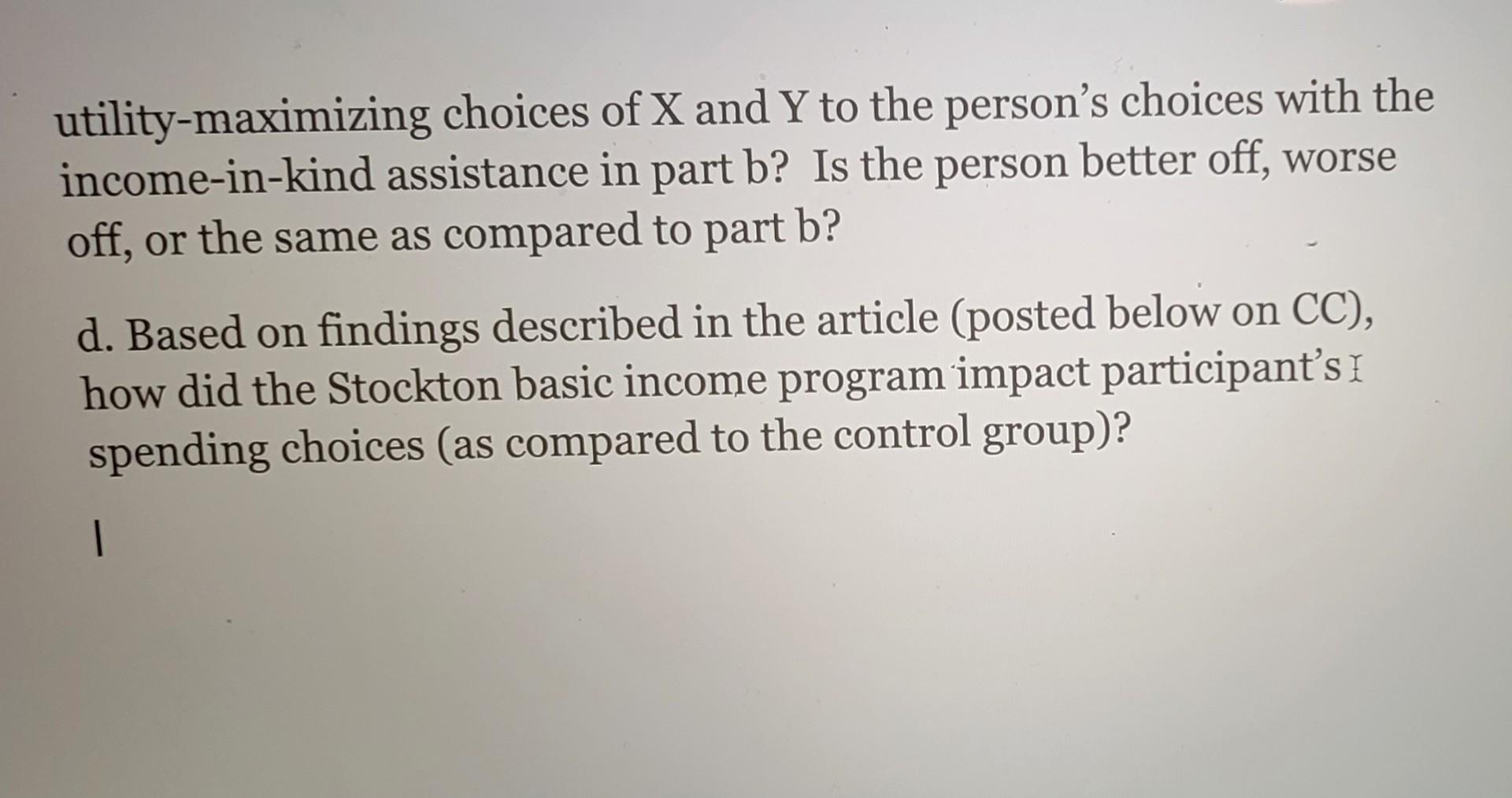Answered step by step
Verified Expert Solution
Question
1 Approved Answer
The city of Stockton, CA, piloted an experimental direct cash-assistance program that gives low-income individuals $500 monthly with no restrictions on how to spend



The city of Stockton, CA, piloted an experimental direct cash-assistance program that gives low-income individuals $500 monthly with no restrictions on how to spend the money. The program is unique in that the $500 has "no strings" attached - it is not tied to work decisions or specific consumption goods. In the problem below, you are asked to reason through the choice behaviors from this program as compared to a typical income-in-kind assistance program of the same $500 value -- using graphs and reasoning, no math required! To simplify, consider a typical low-income person with income Y = $1,500 per month to spend on some good X (where X is some basic-needs type good such as food, housing, transportation, childcare, or schooling, etc.) The price of X is Px = $2 per unit. Use indifference curves and budget constraints to evaluate the questions below, making sure to explain your analysis. a. Draw a budget constraint showing the feasible combinations of X (on horizontal axis) and income Y available to spend on other goods (vertical axis). Document the slopes and intercepts of the budget constraint. b. On the same graph, draw the budget constraint showing a $500 income-in-kind voucher program that can only be used to consume good X. Include indifference curves to show whether the income-in-kind voucher can theoretically make the person better off, worse off, or the same as they were without any program? Does the consumption of X increase, decrease, or remain the same? Does income Y to spend on other goods increase, decrease, or remain the same? c. Now draw the budget constraint for the basic-income program that gives the person $500 direct cash assistance per month with "no strings attached" on how they spend it. Compare the utility-maximizing choices of X and Y to the person's choices with the income-in-kind assistance in part b? Is the person better off, worse off, or the same as compared to part b? d. Based on findings described in the article (posted below on CC), how did the Stockton basic income program impact participant's I spending choices (as compared to the control group)? 1
Step by Step Solution
★★★★★
3.37 Rating (153 Votes )
There are 3 Steps involved in it
Step: 1

Get Instant Access to Expert-Tailored Solutions
See step-by-step solutions with expert insights and AI powered tools for academic success
Step: 2

Step: 3

Ace Your Homework with AI
Get the answers you need in no time with our AI-driven, step-by-step assistance
Get Started


